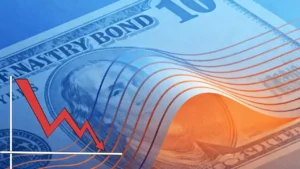Switzerland — a nation often praised for its economic stability, precision industries, and financial discipline — is now walking a tightrope between resilience and vulnerability. Recent trade frictions and shifting global policies have shaken investor confidence and slowed industrial momentum. For decades, Switzerland’s export-driven economy has thrived on international cooperation and open markets, but the changing geopolitical environment is testing that model like never before.
What makes this period particularly challenging is not just the uncertainty around global trade but also the shifting dynamics of the Swiss franc and global demand. While Switzerland has weathered past storms with characteristic steadiness, the latest wave of U.S. tariffs and a strengthening franc are placing noticeable pressure on its export sectors — from luxury watches and pharmaceuticals to precision instruments.
Swiss Economic Growth Forecast: What’s Driving the Downturn?
According to recent projections, the Swiss economic growth forecast for 2026 has been revised downward as trade barriers and tariffs weigh heavily on key industries. Switzerland’s government expects GDP growth to slow to 0.9% in 2026, compared to an earlier estimate of 1.2%. Although this might appear modest, it marks a clear signal that the nation’s economic momentum is losing steam.
The slowdown is attributed mainly to U.S. tariffs that have made Swiss goods significantly more expensive in one of their largest export markets. With a 39% tariff rate now applied to Swiss exports to the U.S., local industries are struggling to maintain competitiveness. Pharmaceuticals, luxury watches, and high-end manufacturing — traditionally the pride of Switzerland — are among the hardest hit.
But tariffs aren’t the only concern. The Swiss franc, known globally as a “safe haven” currency, has appreciated sharply amid rising uncertainty, adding another layer of difficulty for exporters. A stronger franc makes Swiss goods more expensive abroad, shrinking profit margins and dampening foreign demand.
Overview: Swiss Economic Growth Forecast 2026
| Key Indicator | 2025 Estimate | 2026 Forecast | Key Drivers/Notes |
|---|---|---|---|
| GDP Growth | 1.3% | 0.9% | Downward revision due to trade pressures |
| U.S. Tariff Rate | 39% | 39% (expected to remain) | Significant impact on exports |
| Top Export Sectors | Watches, Pharmaceuticals, Precious Metals | Same | Most affected by tariffs |
| Currency Strength (CHF) | +12% YTD appreciation | Stable-to-strong | Poses risk to exporters |
| Inflation Outlook | Below 1% | Slightly negative risk | Threat of disinflation persists |
| Key Risk Factors | Trade policy, strong franc, global slowdown | Continuing | Potential for recession in late 2026 |
Tariffs and Trade Pressures: A Growing Strain on Exports
Switzerland’s economy thrives on exports, accounting for over 70% of its GDP. The U.S. remains one of its largest trading partners — a relationship that has long benefited both sides. However, the imposition of a 39% tariff on Swiss goods has altered that dynamic dramatically.
Pharmaceutical giants, watchmakers, and precision tool manufacturers now face rising costs and shrinking access to American consumers. For example, branded pharmaceutical products — a cornerstone of Swiss exports — are subject to 100% tariffs unless production facilities are located in the U.S. This policy effectively forces companies to rethink their manufacturing strategies or absorb heavy costs.
For the luxury goods sector, the challenge is both financial and reputational. Brands like Breitling and Patek Philippe have been forced to increase global prices to balance out U.S. tariff costs. While the elite segment may absorb some of that shock, smaller firms in the supply chain are less flexible, leading to layoffs and investment cutbacks.
The Swiss Franc: Safe Haven or Silent Headache?
Ironically, one of Switzerland’s biggest economic strengths — the global trust in its currency — has become a double-edged sword. The Swiss franc (CHF) has appreciated over 12% this year, driven by investors seeking safety amid global volatility.
While a strong franc demonstrates market confidence, it also undermines Switzerland’s export competitiveness. Every upward tick in the franc’s value makes Swiss products more expensive in foreign markets. The Swiss National Bank (SNB) faces the delicate task of preventing deflation while managing currency strength without resorting to deep negative interest rates.
This currency dynamic is now one of the central challenges facing Swiss policymakers. Economists warn that if the franc strengthens further, the economy could slip into mild recession by the end of 2026 — a rare event for a nation historically insulated from major downturns.
How Global Conditions Are Compounding the Problem
The situation is not unfolding in isolation. Switzerland’s trade struggles mirror a broader slowdown in global demand. With geopolitical tensions rising and markets reacting to protectionist trade measures, international trade volumes are expected to grow only modestly over the next year.
European partners are also showing signs of weakness, and Asian markets — particularly China — are consuming fewer Swiss exports than before. This combination of external shocks and domestic currency pressures has left Swiss industries navigating turbulent waters.
On top of this, persistent uncertainty around U.S. trade policy adds a psychological dimension to the problem. Businesses are hesitant to invest or expand when policy direction could shift overnight. This “wait and see” sentiment is stalling capital expenditure and innovation, both vital for Switzerland’s long-term growth.
Economists Warn of Mounting Risks
Financial experts across Europe are sounding cautious notes. Charlotte de Montpellier, a senior economist at ING, recently highlighted that “risks for the Swiss economy are mounting” due to its exposure to U.S. markets — roughly 4% of Switzerland’s total GDP. She estimates that the cumulative impact of current tariffs could shave nearly 0.9% off GDP within two years.
Others, like Melanie Debono of Pantheon Macroeconomics, predict that Switzerland could face two consecutive quarters of negative growth, effectively sliding into a mild recession in the second half of 2026. She also notes that falling business investment and weak goods exports align with early indicators of contraction.
Still, it’s not all doom and gloom. Analysts believe that if Switzerland and the U.S. reach a trade agreement or tariffs ease, the country’s economy could rebound quickly, thanks to its innovation-driven industries and robust domestic financial system.
How Businesses Are Coping
Swiss companies are responding with a mix of price adjustments, production shifts, and cautious optimism. Luxury watchmakers have modestly increased prices across regions to absorb some tariff costs. Pharmaceutical firms are exploring new partnerships and considering partial relocation of facilities to the U.S. to bypass the tariff wall.
While these adaptations come at a cost, they also showcase Switzerland’s agility. The nation’s business culture — pragmatic, technologically advanced, and internationally minded — remains a strong asset. Yet, for small and medium-sized exporters without the resources of global corporations, this period poses existential challenges.
The Road Ahead: Can Switzerland Recover?
Despite the gloomy short-term outlook, Switzerland retains several advantages that could support recovery once global trade conditions stabilize. Its well-educated workforce, strong research infrastructure, and reputation for quality remain unmatched. Moreover, the Swiss government’s history of fiscal prudence and low public debt provides room for stimulus if needed.
The path forward will depend largely on trade diplomacy and currency management. If the Swiss franc stabilizes and tariffs ease, growth could return to near 1.5% by 2027. But for now, policymakers and business leaders alike are bracing for a slower year, with hopes pinned on negotiation rather than confrontation.
Conclusion
The latest Swiss economic growth forecast paints a picture of an economy under pressure — not from internal weakness, but from external headwinds. Tariffs, currency strength, and global uncertainty are testing Switzerland’s resilience.
Still, the country’s reputation for adaptability and precision may yet see it through. As one economist put it, Switzerland doesn’t panic — it recalibrates. And in a world of shifting alliances and unpredictable policies, that calm discipline might be the country’s most valuable export of all.
Common Asked Questions
Q1: What is the latest Swiss economic growth forecast for 2026?
Ans: The Swiss government has revised its 2026 GDP growth forecast down to 0.9%, reflecting the impact of U.S. tariffs and a stronger Swiss franc. This marks a slowdown from the previous estimate of 1.2%.
Q2: How are U.S. tariffs affecting the Swiss economy?
Ans: The 39% U.S. tariff rate on Swiss goods is weighing heavily on exports, especially in the luxury, pharmaceutical, and precision manufacturing sectors. The higher costs are reducing competitiveness in key markets like the U.S.
Q3: Why is the Swiss franc’s strength a problem for the economy?
Ans: The Swiss franc’s 12% appreciation this year has made Swiss goods more expensive abroad, hurting export demand. While a strong franc shows investor confidence, it also creates deflationary pressure and complicates central bank policy.
Q4: Could Switzerland enter a recession in 2026?
Ans: Economists warn of a possible mild recession if trade tensions persist and the franc continues to strengthen. Some forecasts predict two quarters of negative growth in late 2026, though recovery could follow if tariffs ease.









No Comments Yet
Be the first to share your thoughts.
Leave a Comment